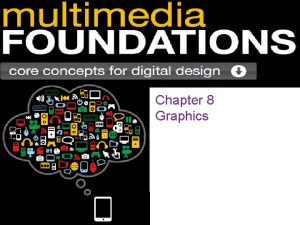Chapter 14 Preview Key Terms Key Ideas Graphics





















- Slides: 21

Chapter 14 Preview • Key Terms • Key Ideas • Graphics • Critical Thinking Chapter Review

Chapter 14 Chapter Review Using Key Terms 1. _________ is the force that blood exerts against the inside walls of a blood vessel.

Chapter 14 Chapter Review Using Key Terms 1. Blood pressure is the force that blood exerts against the inside walls of a blood vessel.

Chapter 14 Chapter Review Using Key Terms 2. A _______ is a sudden loss of blood flow to the heart muscle.

Chapter 14 Chapter Review Using Key Terms 2. A heart attack is a sudden loss of blood flow to the heart muscle.

Chapter 14 Chapter Review Using Key Terms 3. _____ is a disease by uncontrolled cell growth.

Chapter 14 Chapter Review Using Key Terms 3. Cancer is a disease by uncontrolled cell growth.

Chapter 14 Chapter Review Understanding Key Ideas 4. ______ are uncontrollable risk factors for lifestyle disease. A. Tobacco use, gender, and age B. Genes, age, and gender C. Age, exercise level, and family history of disease D. Gender, exercise level, and tobacco use

Chapter 14 Chapter Review Understanding Key Ideas 4. ______ are uncontrollable risk factors for lifestyle disease. A. Tobacco use, gender, and age B. Genes, age, and gender C. Age, exercise level, and family history of disease D. Gender, exercise level, and tobacco use

Chapter 14 Chapter Review Understanding Key Ideas 5. To help prevent the development of a lifestyle disease, a person should A. not smoke. B. exercise. C. have a low-fat diet. D. all of the above.

Chapter 14 Chapter Review Understanding Key Ideas 5. To help prevent the development of a lifestyle disease, a person should A. not smoke. B. exercise. C. have a low-fat diet. D. all of the above.

Chapter 14 Chapter Review Understanding Key Ideas 6. Which of the following is not a type of cardiovascular disease? A. stroke B. atherosclerosis C. cancer D. high blood pressure

Chapter 14 Chapter Review Understanding Key Ideas 6. Which of the following is not a type of cardiovascular disease? A. stroke B. atherosclerosis C. cancer D. high blood pressure

Chapter 14 Chapter Review Understanding Key Ideas 7. Which of the following is not a treatment for cardiovascular disease? A. angioplasty B. bypass surgery C. heart transplant D. echocardiography

Chapter 14 Chapter Review Understanding Key Ideas 7. Which of the following is not a treatment for cardiovascular disease? A. angioplasty B. bypass surgery C. heart transplant D. echocardiography

Chapter 14 Chapter Review Understanding Graphics 8. How many people were diagnosed with diabetes in 1978?

Chapter 14 Chapter Review Understanding Graphics 8. How many people were diagnosed with diabetes in 1978? About 5 million

Chapter 14 Chapter Review Understanding Graphics 9. What is the difference in the number of people diagnosed with diabetes in 1988 and the number diagnosed in 1998?

Chapter 14 Chapter Review Understanding Graphics 9. What is the difference in the number of people diagnosed with diabetes in 1988 and the number diagnosed in 1998? About 3 million (9. 5 million – 6. 5 million = 3 million)

Chapter 14 Chapter Review Critical Thinking 10. Smoking deceases the amount of oxygen that the blood can carry. How can this effect increase the chances that a smoker will develop cardiovascular disease?

Chapter 14 Chapter Review Critical Thinking 10. Smoking deceases the amount of oxygen that the blood can carry. How can this effect increase the chances that a smoker will develop cardiovascular disease? Decreased oxygen in the blood makes the heart work harder and puts stress on the vessels, increasing the risk of cardiovascular disease.
 Graphics monitors in computer graphics
Graphics monitors in computer graphics Introduction to computer graphics ppt
Introduction to computer graphics ppt Polynomial degrees and terms
Polynomial degrees and terms Finding like terms
Finding like terms Thesis paragraph example
Thesis paragraph example Thesis statement summary
Thesis statement summary Test prep preview
Test prep preview Test prep preview
Test prep preview Test prep preview
Test prep preview Test prep preview
Test prep preview Sccm technical preview
Sccm technical preview Startling statement introduction examples
Startling statement introduction examples Thesis and preview statement example
Thesis and preview statement example Test prep preview
Test prep preview Nnn preview
Nnn preview The selection preview
The selection preview Test prep preview
Test prep preview The four agreements preview
The four agreements preview Test prep preview
Test prep preview Line between pada perintah column digunakan untuk membuat
Line between pada perintah column digunakan untuk membuat Realistic job preview advantages and disadvantages
Realistic job preview advantages and disadvantages Test prep preview
Test prep preview









































